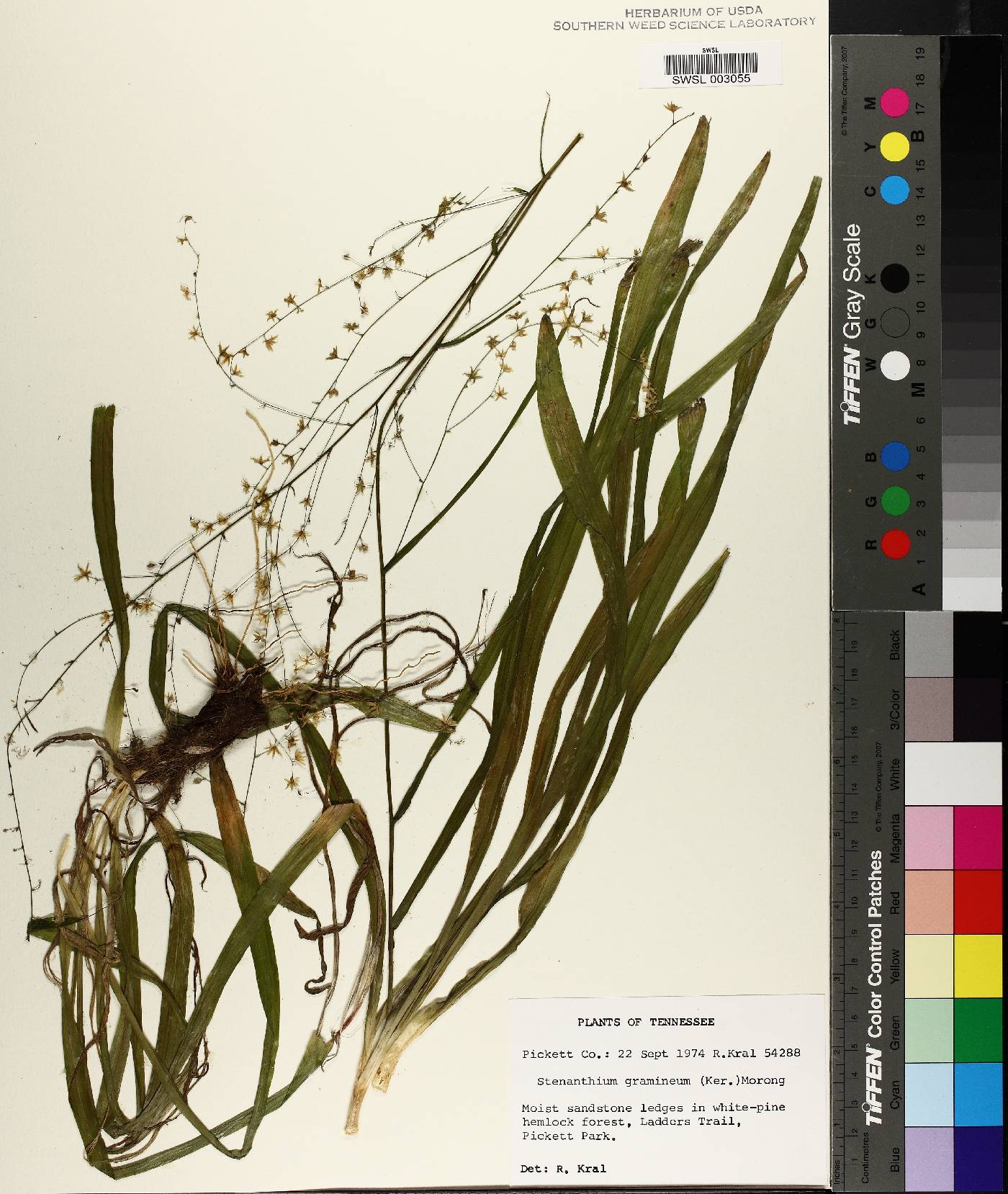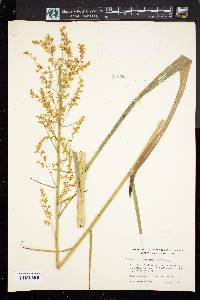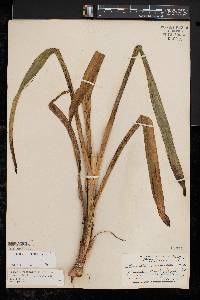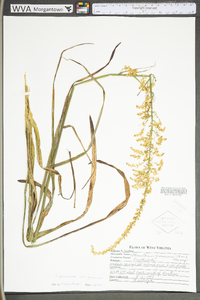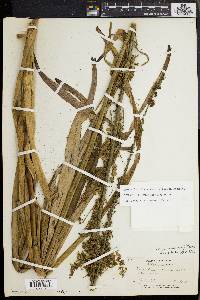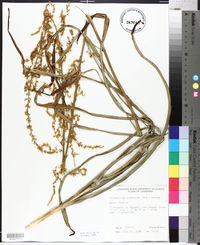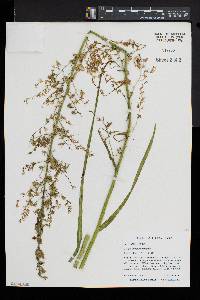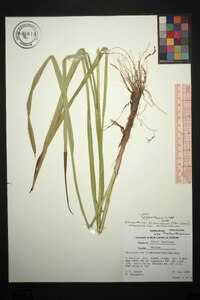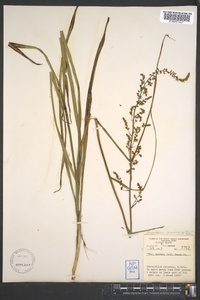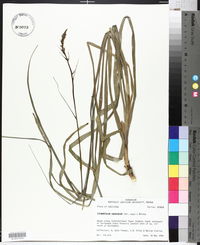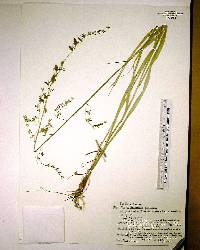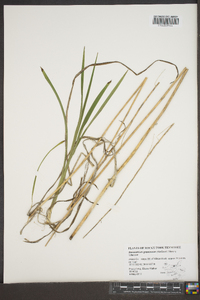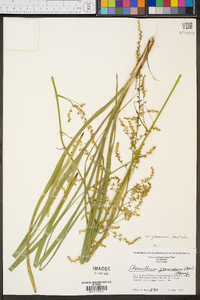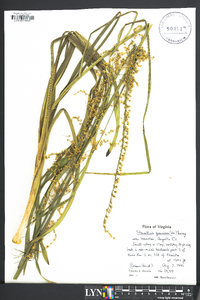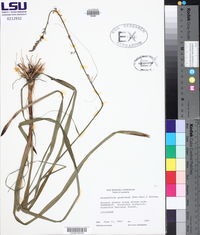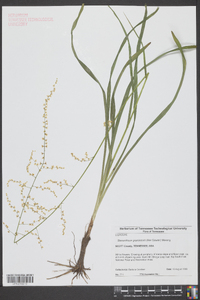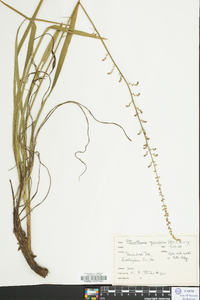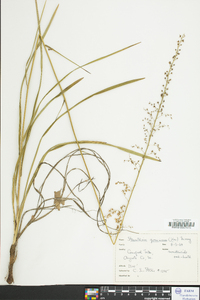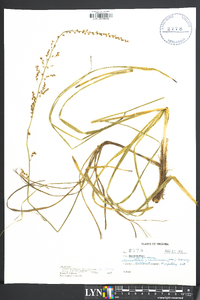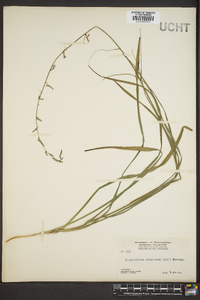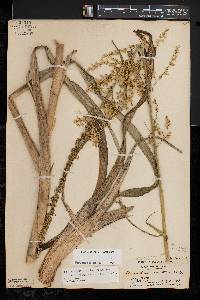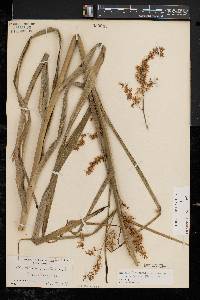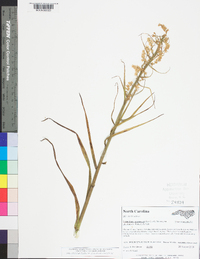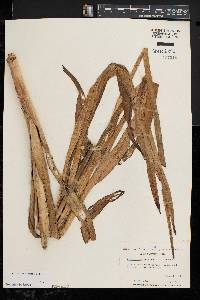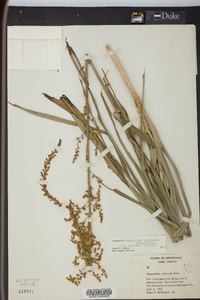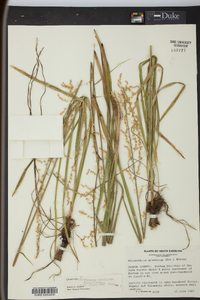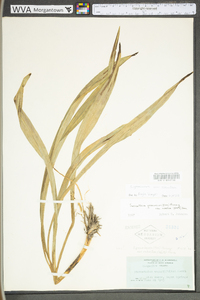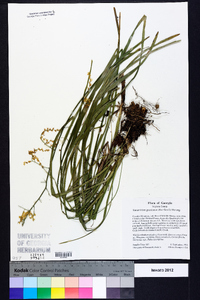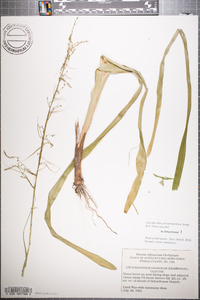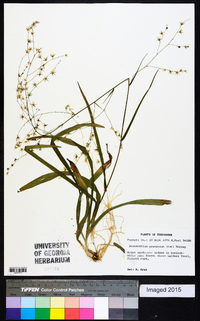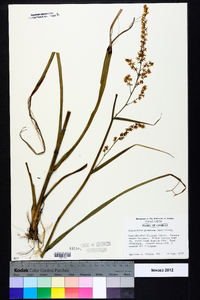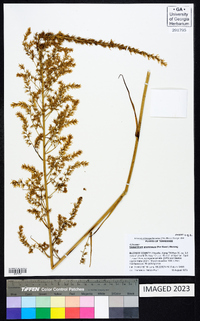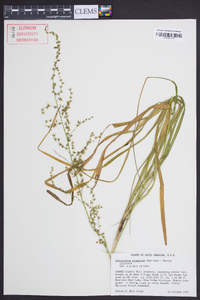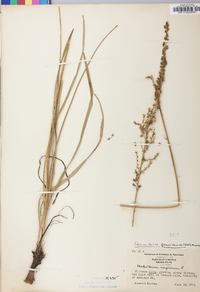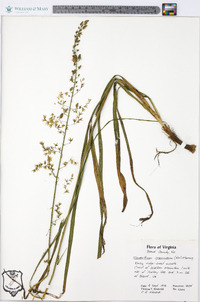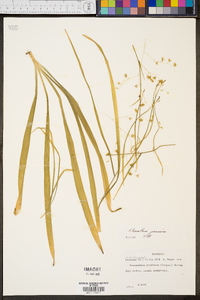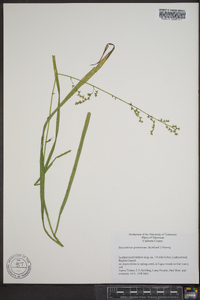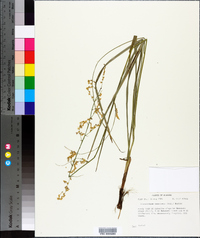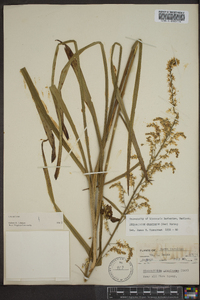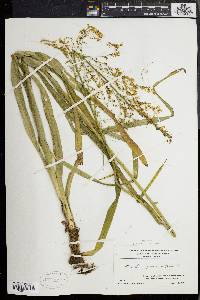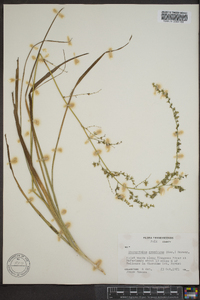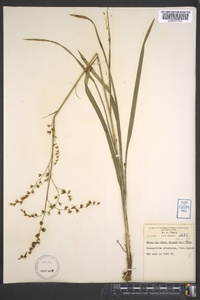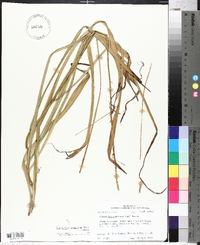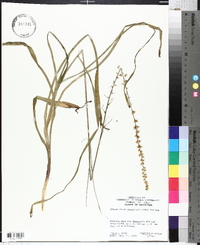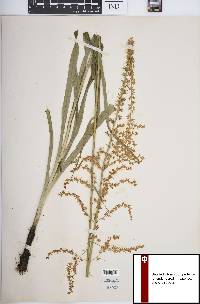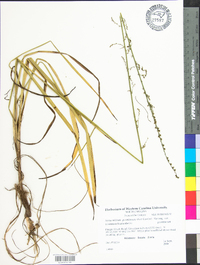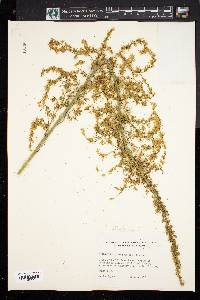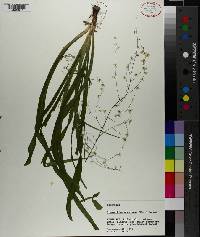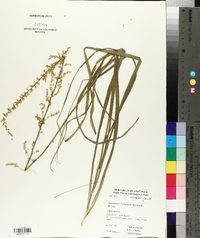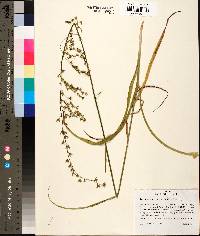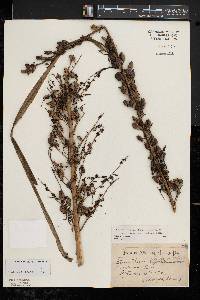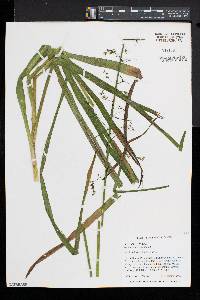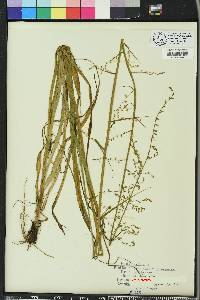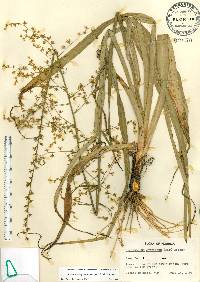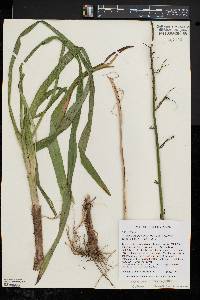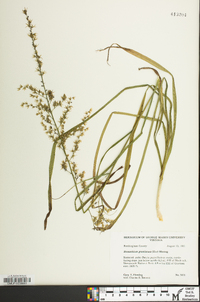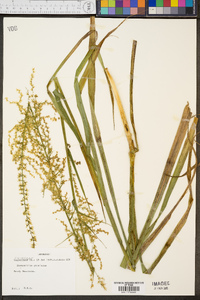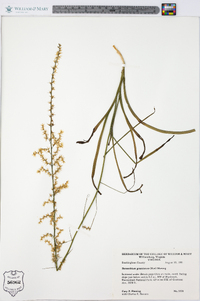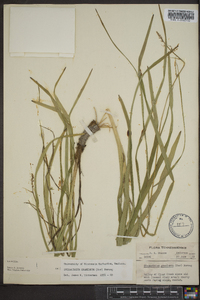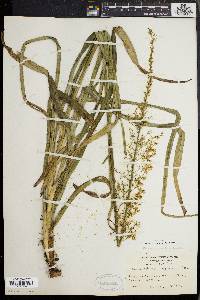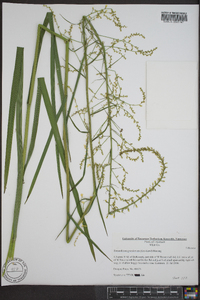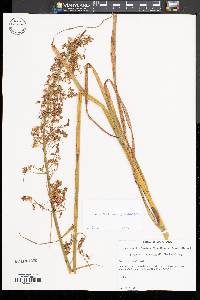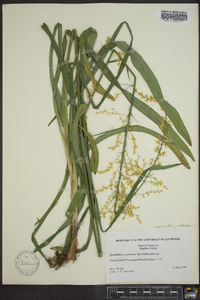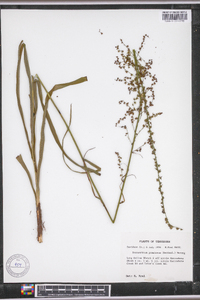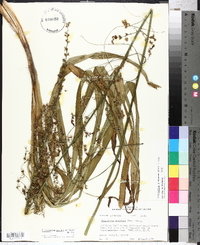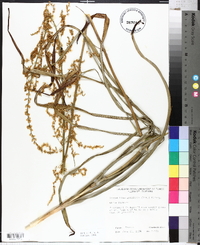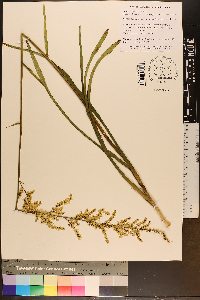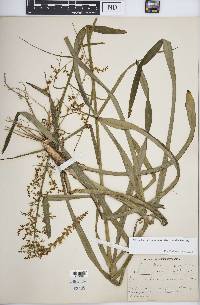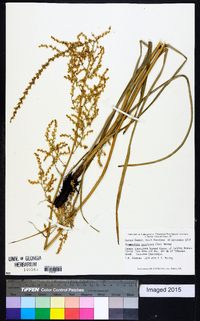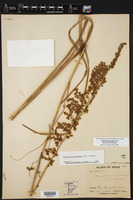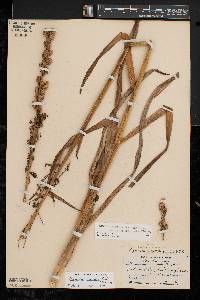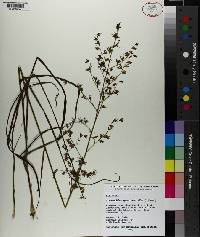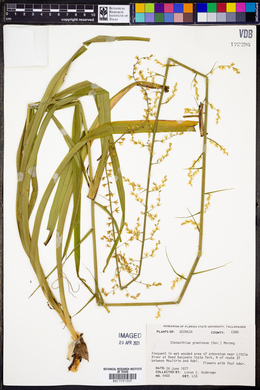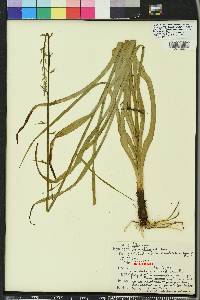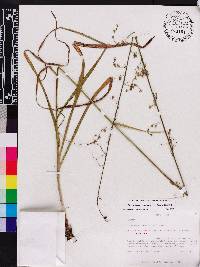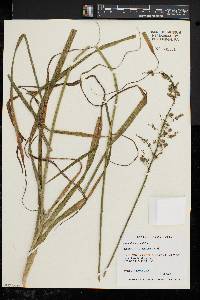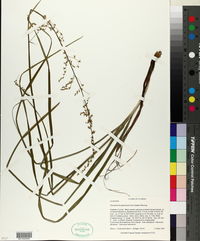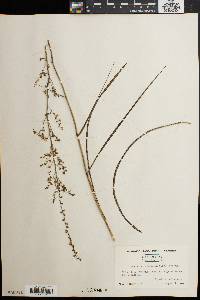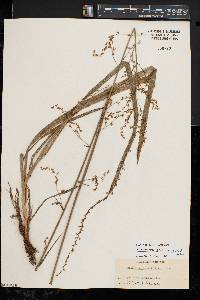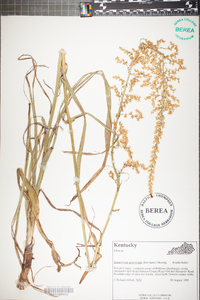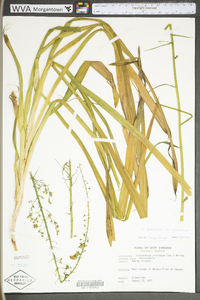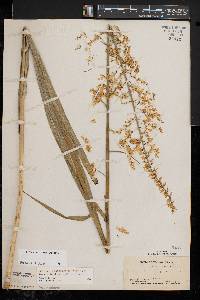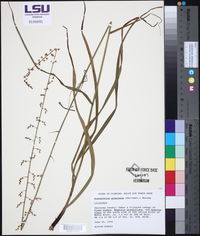
|
|
|
|
Family: Melanthiaceae
Eastern Featherbells
[Veratrum angustifolium Pursh] |
Bulbs slender, ellipsoid, 3-8 cm. Stems 5-20 dm. Leaves numerous, ascending; blade narrowly linear, channeled, 20-70 × 0.5-3 cm, apex acuminate to obtuse. Inflorescences freely branching, terminal panicles of many compound racemes; terminal racemes longer than lateral; bracts linear, 2 mm. Flowers erect; perianth rotate; tepals not recurved distally, white to greenish yellow, narrowly lanceolate, 4-10 × 1-2 mm, apex acute to narrowly acuminate; tepal glands absent; stamens 1-4 mm; filaments equal; pedicel divergent, 4-6 mm. Capsules oblong, cylindric to ovoid, 6-10 mm including divergent style beaks. Seeds brown, ellipsoid to lanceoloid, 5-8(-10) mm. 2n = 20. Flowering mid--late summer. Moist woods, thickets, and meadows; 0--1200 m; Ala., Ark., D.C., Fla., Ga., Ill., Ind., Ky., La., Md., Mich., Mo., N.C., Ohio, Pa., S.C., Tenn., Tex., Va., W.Va. Stenanthium gramineum shares molecular affinities with the Zigadenus densus (Desrousseaux) Fernald and Z. leimanthoides A. Gray species pair (W. B. Zomlefer et al. 2001). The varieties of Stenanthium gramineum recognized by M. L. Fernald, but not here, are indistinct and sympatric (R. R. Gates 1918; R. G. Johnson 1969). The disjunct upper Michigan localities represent locally established waifs (E. G. Voss 1972-1985, vol. 1).
Perennial herb with a bulb 0.5 - 2 m tall Stem: upright. Leaves: mostly basal, numerous, spiral, ascending, sheathing at the base, 20 cm - 0.7 m long, 0.5 - 3 cm wide, reduced upward, narrowly linear with a rounded to pointed tip, channeled. Inflorescence: a terminal, branched group of compound clusters (racemes), 20 cm - 0.5 m long. The wand-like terminal raceme is longer than the lateral ones. Flowers: upright, white to greenish yellow, variable in size, rotate (disc-shaped), with six narrowly lance-shaped tepals. Tepals 4 - 10 mm long, 1 - 2 mm wide. Stamens six. Fruit: a three-lobed capsule, 6 - 15 mm long (including beaks), cylindrical to egg-shaped. Seeds brown and 3 - 8 mm long. Similar species: No information at this time. Flowering: June to August Habitat and ecology: Rare in the Chicago Region and known only from Newton County, Indiana. It is uncommon in the southern half of Illinois, where it grows in moist woods and along streams. Occurence in the Chicago region: native Etymology: Stenanthium comes from the Greek words stenos, meaning narrow, and anthos, meaning flower, referring to the narrow tepals. Gramineum means grass-like. Author: The Morton Arboretum Stem erect, leafy, to 1.5 m; lvs numerous, the larger 2-4 dm נ5-15 mm; panicle 2-5 dm, freely branched, the central axis continued into a wand-like terminal raceme; pedicels and bracts 2 mm; fls variable in size, the tep 4-10 mm; fr 10-15 mm; seeds 3-5 mm; 2n=20. Moist woods and meadows; Pa., O., Ind., and Mo., s. to Fla. and Ark.; locally intr. in Mich. July-Sept. (S. robustum, the form with erect instead of deflexed frs) Gleason, Henry A. & Cronquist, Arthur J. 1991. Manual of vascular plants of northeastern United States and adjacent Canada. lxxv + 910 pp. ©The New York Botanical Garden. All rights reserved. Used by permission. From Flora of Indiana (1940) by Charles C. Deam This species is local in Indiana and apparently so throughout its range. It is infrequent in sandy soil for half a mile in an open, black and white oak woods on the south side of the Tippecanoe River north of Rochester, Fulton County, and I found one plant in a sandy prairie habitat a mile north of Rochester. There is a small colony on a low, sandy, open black and white oak ridge between swamps in section 12 about 21 miles southeast of Etna Green, Kosciusko County. I found it to be frequent for a short distance in sandy soil at the base of a white and black oak slope on the south side of a large swamp about 3 miles northwest of Hoover, Cass County. In the same colony I found a specimen of the next species [Stenanthium robustum]. The remainder of my specimens were found in similar habitats. I have several times transplanted it to the open in neutral soil in our garden and it has lived for only a few years. [Deam describes S. robustum as a species distinct from S. gramineum. ] I have only two specimens from Indiana which I refer to this species. Data concerning this species and the preceding one [Stenanthium gramineum] are meager; some authors do not separate them and one has made this a mere form of the preceding. Robert Ridgway was interested in this problem and wrote me concerning it. He was firmly convinced that the two species are distinct. I quote, in part, from his letter to me dated January 13, 1925, Olney, Illinois: "I have several of the former (Stenanthium gramineuin) transplanted from the "wilds hereabout" and one of the latter (Stenanthium robustum) from the Highland Nursery, North Carolina. They are planted near together, in identical soil, and all local conditions governing them are the same. The first blooms from June 21 to July 11 (average date July 1) ; while the last blooms from August 1-24 (average date August 18), a difference of more than six weeks." The specific name for this species seems to be well chosen, since the whole plant is larger and more robust in all of its parts. The leaves are wider, the floral segments longer, the fruit longer, and the stigmas slightly longer. The width of the leaves and the position of the mature fruit are sufficient to distinguish the species. Since I found both species in the same colony I am not entirely satisfied that there are two species of our plants but until sufficient data are accumulated I believe it is best to separate them, placing them in the taxonomic category which the differences suggest. …… Indiana Coefficient of Conservatism: C = 8 Wetland Indicator Status: FAC |
|
|
|
This project was made possible in part by the Institute of Museum and Library Services [MG-70-19-0057-19].
Powered by Symbiota

